Virtual Realities, a game-changer that is transforming the way the home builders and their customers interact
TransformologyXR
The Future of Mixed Reality for home builders and their customer
At TransformologyXR our vision is to enable everyone to design and visualize their dream homes, transforming their journey throughout their project life cycle from Ideation to Design, Purchase, and Contracting, Execution all the way to realization.
Our platform and services democratize technology and create an ecosystem where people, designers, architects, contractors, suppliers, retailers can engage through our immersive environments and use our enabling technology to transform their experience.
Buying your home
If you are buying your new home or in the business of selling homes, the process has remained the same for decades. The home builders and property developers build homes to sell to the buyer to meet their targets and beat the competition into selling first and the buyer is trying to make one of the biggest decisions of their life, buying their new home; something that will have a huge impact on their life and the life of their family and also their long term financial state.
From both the buyer’s and the seller’s point of view this process is exciting but also time-consuming and somewhat inconvenient. Buying a house involves the first real-life visit to the house, usually involves many questions and explanations trying to imagine what your future home will look like, how you are going to decorate it, what the furniture would look like, and if you are a foodie like me how to make sure the kitchen is good enough and so on and so forth. Depending on how fussy you are, this process will go on for a few days/weeks and potentially months with lots of visits, phone calls, emails, and follow-ups until you can finally see yourself in your new home and the seller is happy that you are happy and they can finally close the sale.
The role of Digital Technology
Today’s digital technology has changed things a bit in the workflow, the internet, digital imaging technology, and modern graphic design enabled new channels and more context for both the seller and the buyer, the typical online listing of a house contains some photos, a floor plan, possibly a 360 panorama and potentially a fly-through video, the more modern technologies include adding a three-dimensional virtual tour to give the full context of the house in a visually appealing and spatially aware context.
However, there is a game-changer that is transforming the way the business and the customer interact, Virtual Reality (VR). For most people, VR is associated with games and entertainment. The technology, however, has a huge potential for this market and also many different applications in different industries, there is already many use-cases where VR is used to train people, it started with advanced simulators for training pilots, F1 drivers, and people operating heavy machinery or drilling for oil, but today with the advent of consumer VR headsets, more immersive applications for training people in health care, Oil and Gas, Rail and many other industries are being developed to use the newly available hardware.
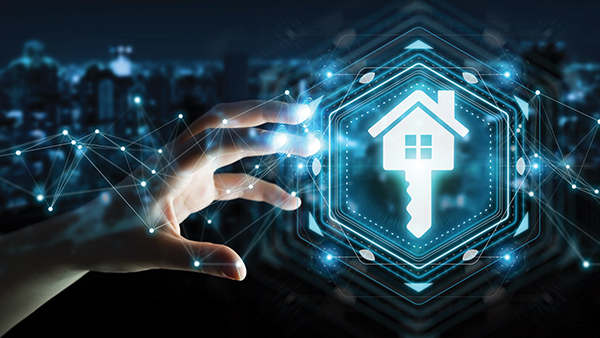
How VR technology is used today in the real estate sphere?
The use of advanced imaging, 3D models, and CGI is already established in the real estate business as they use the available digital channels, most people nowadays search for properties online first. Virtual reality offers new informational, cost-effective and compelling channels for home builders to market their products and for homebuyers to find their new dream home.
Virtual Property Tours
Typically, home buyers visit multiple properties at different sites and locations before narrowing it down to a few potentials, this requires a lot of time and effort on both the buyers and the sellers. VR offers a new way to solve this problem, allowing people to virtually immerse themselves and visit multiple properties without leaving their homes, by using a VR headset people are now able to immerse themselves in a 3D model of the property to help decide which are worth a real-life visit.
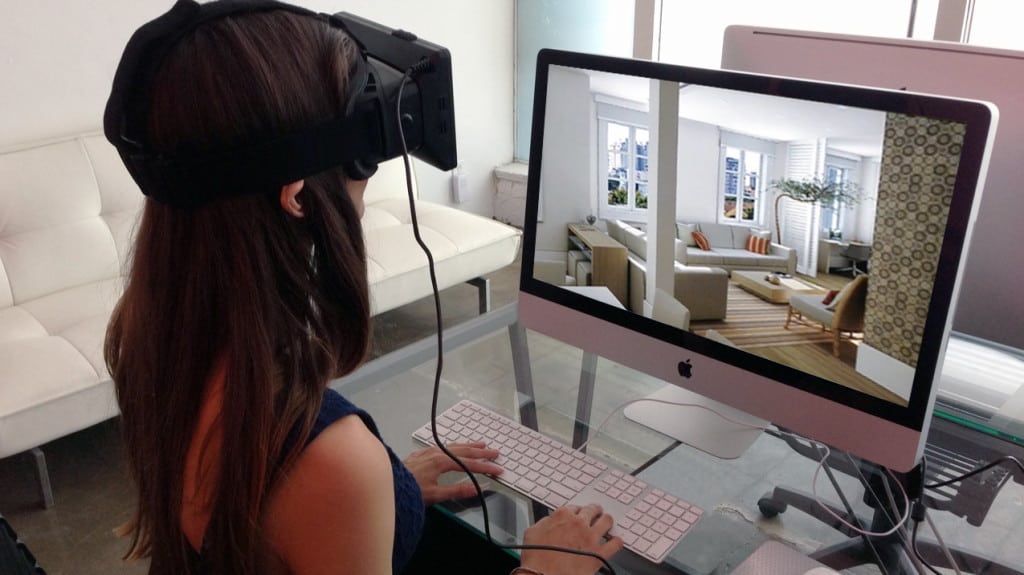
Virtual tours are usually either a guided tour which is more like a property promotional video, they are simple to make using panoramic cameras that take 360-degree videos. The videos can still be used on normal channels but for the truly immersive experience, the buyer should wear a VR headset to truly experience the VR tour. The other type is interactive tours which allow the user to choose where to go in the home and potentially interact with space through special hot spots in the view. Interactive Tours are more technically demanding than Guided Tours but they offer a more dynamic environment to showcase the property.
Virtual Show Homes
Imagine a home full of furniture and looking appealing and cosy, maybe with some furniture that you like on Instagram or some photos on the wall from your last holiday in Barcelona. Now imagine the same home empty, walls are dull colour and looking all boring. Which one would be easier to sell? The research shows that 80% of home sellers says that show homes help buyers to better understand the space and associate with the homes.
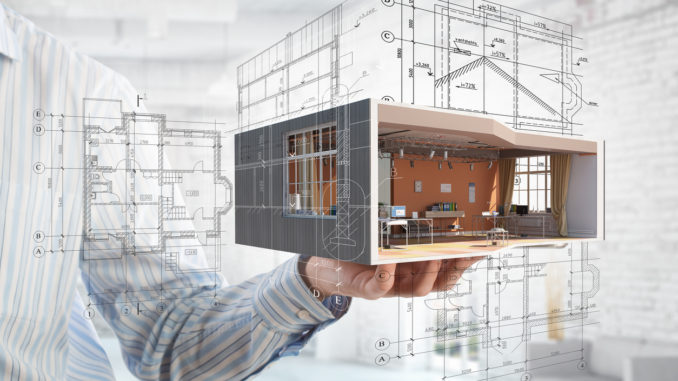
Show homes, however, require investment and they are limited to a few options especially if you are selling new builds. VR is a great technology to help sellers create appealing virtual show homes that caters for multiple personas and transform their new build into a stunning home at the fraction of the cost of real show homes.
Pre-Build Visualisation
Selling a property before it’s even built is a challenge to developers that brings high rewards, home builders use small-scale 3D models for the projects that show the exterior of the buildings to help architects and investors imagine the development and to help market and potentially sell their yet-to-be developments.
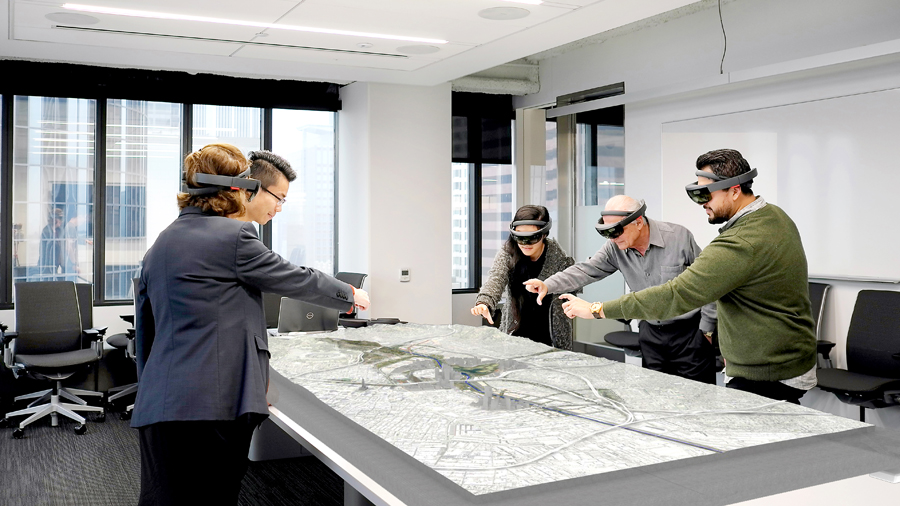
By using VR homebuilders can now build more immersive models of the developments and the surrounding environment and also build attractive interior designs for the to-be-built projects to help show potential buyers a clear view of what is being developed.
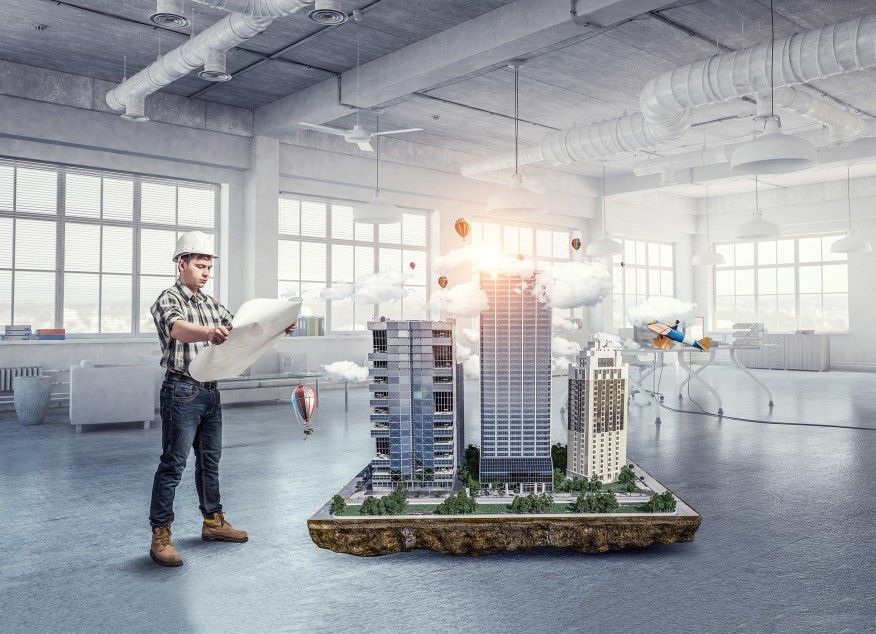
Advantage of using Virtual Reality for your business
The benefits of using VR are clear from the use cases
- Saves Time: By having your properties available to view 24/7 home buyers can reach you and view the properties anytime without needing to travel, more importantly by leveraging personal assistants your sales representative can free up their time from answering most common questions and hand-holding to attend to more productive engagements with the buyers and follow up and generate more leads.
- Saves Money: As the technology matures and the cost of models, hosting, and rendering in the cloud become cheaper you can create multiple versions of your virtual show homes at the fraction of real show homes prices.
- Offer Wider Reach: having a virtual model allows national reach and also global reach where potential buyers can access the virtual home from anywhere.
- Builds an emotional connection between the buyer and the home. Having consumers immerse and see themselves in the homes you are building, will create an emotional connection with the space to help them make the decision.
- Offers a transformational Point of Sale/Contact between the buyer and seller, the virtual environment offers the home seller a chance to present the buyers with much helpful information, for example, mortgage calculators, energy estimates, information about similar/other properties, close by amenities and leisure and many more.
Technology Adoption
The history of VR dates back to the 1950s with a booth-like machine called Sensorama to give people the illusion of being in a fully 3D immersive world with the smell, stereo sound, vibrations, and even atmospheric effects like the wind. In 1968 when computer scientist Ivan Sutherland created the first Head Mounted Display which was also considered as the first Augmented Reality. This project never made it to the commercial domain due to the heavyweight of the machines. Between the 1960s and 1980s, the military was working on a Super Cockpit the provided an immersive 3D flight simulator. By the early 1990’s game console Sega was working on its Sega VR project as the first consumer-facing technology but the project was never released. In 2010 a startup created the first prototype of the Oculus Rift for the first consumer-facing 90-degree field of view, the startup raised $2.4 million on Kickstarter a couple of years later and was acquired by Facebook in 2014 for $2 Billion.
Today hundreds of companies are working on their own Headsets for VR and AR including Google, Amazon, Apple, Microsoft, Samsung, and HTC, and many other companies, competition in the market drives the advancement of technology as we see more controllers and more creative interactions with the virtual world. This has also driven many interesting use-cases in many industries and also contributed to lowering the cost of the hardware where will soon lead to widespread adoption of the technology as a new marketplace for goods and services and more rich interactions between businesses, users, and consumers.
At TransformologyXR our vision is to enable everyone to design and visualize their dream homes, transforming their journey throughout their project life cycle from Ideation to Design, Purchase, and Contracting, Execution all the way to realization. Check out our services section to how we can transform your business http://www.transformologyxr.com/services/

